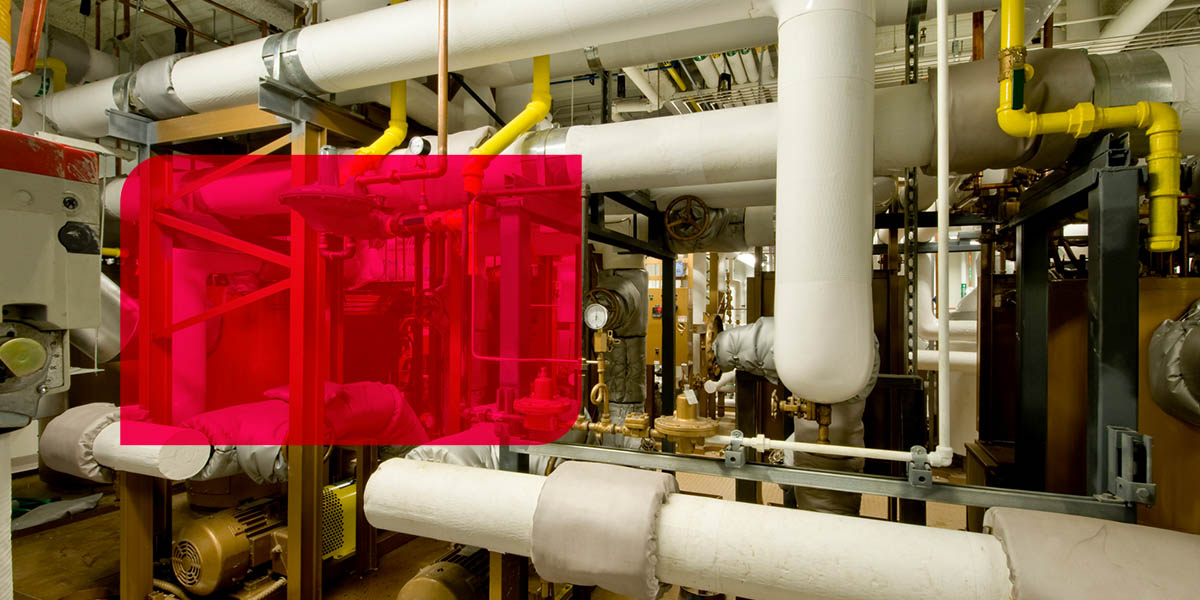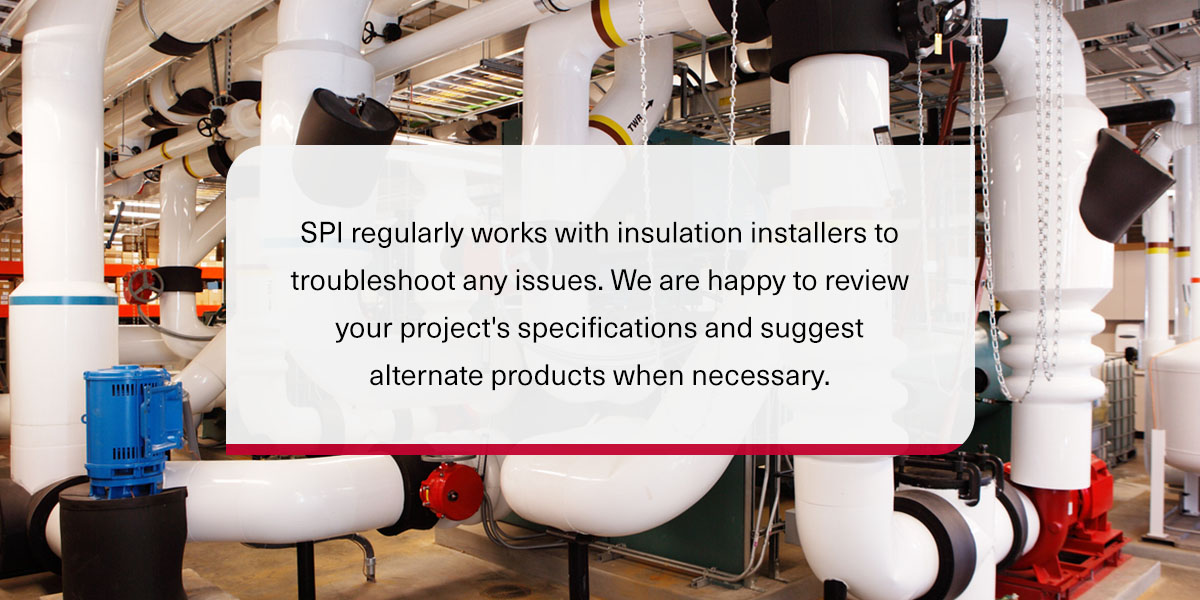Most Common Challenges When Installing Insulation
Posted on Tuesday Jun 18, 2024 at 11:50AM in General

Most Common Challenges When Installing Insulation
Insulation is crucial to most modern builds, but installing it can be tricky. Even technicians with years of experience can make mistakes. They might use the wrong type of insulation or overlook an important environmental threat. The effects of these insulation mistakes can range from reduced efficiency to significant safety concerns. Before buying insulation, make sure you always do the following:
- Reference your project's specification when selecting insulation materials
- Follow the manufacturer's recommended installation guidelines for the type of insulation you have selected
- Be prepared by knowing how to avoid the below common challenges
Challenges With Product Selection, Availability, or Delivery
Choosing the right product could be complicated with so many applications and types of insulation material. You'll need to balance factors like the product's cost and ease of installation. Physical properties, such as those involving heat transfer and structure, also play a role. Other concerns include threats of moisture, mold, flammability, and rot. Your choice of insulation will determine how well it performs in a given environment. It's also important to double-check that your specification matches the manufacturer's recommended installation guidelines to ensure that the installed insulation will be effective. If you're uncertain of what material you need for your specific application, a product expert like those at SPI can help. Never hesitate to contact us with questions about the right material for your job.
Even if you have selected the perfect type of insulation, availability issues could significantly impact your work. Many contractors work on tight deadlines, so a delayed delivery could make or break the project. For some materials, wait times can sometimes exceed six months. A flexible and informed distributor can help you find alternative options for delayed products.
Another concern comes from defects. Always inspect your insulation upon delivery to avoid a delay. No one wants to start installing only to find out they must wait for a replacement to arrive. An agile supplier like Specialty Products and Insulation (SPI) is extremely valuable in these instances. We can help you get a substitute quickly to meet your deadlines.
Obstacles After You Have the Products
Once you have the right item in hand, you can focus on avoiding mistakes while installing insulation. Common challenges often come from improper procedures or poor planning. Here are a few insulation mistakes to be aware of - and hopefully avoid.
Poor Timing With Other Contractors
Both new construction and retrofitting projects can involve many other trades. A lack of time and space may cause installation and safety concerns. You'll need good communication with other professionals, especially the general contractor. Strong communication supports effective scheduling and time allocation, so always try to be proactive when speaking with your general contractor on any project. It helps everyone do their best work. In commercial and residential spaces, ensure you can place insulation before drywall, and on any type of project, avoid clashing with another worker's space.
Not Enough Space for Your Insulation
Insulation typically needs a specific thickness to perform as intended. If you have less space on the job site than expected, you might need to use a thinner product. Since thickness impacts efficacy, you may need an entirely different material to achieve the same level of insulation. Otherwise, your installation could fail to meet requirements.

Another common way to deal with limited space is to compress the insulation. However, this approach can greatly reduce the material's R-value and effectiveness. Fiberglass insulation, for example, traps air between the fibers. Squeezing it into a small space pushes out the air, leaving less room for capturing heat. Be sure to reach out to your insulation distributor to identify a solution that won't compromise the results of your work. SPI regularly works with insulation installers to troubleshoot any issues. We are happy to review your project's specifications alongside the manufacturer's data and suggest alternate products when necessary.
Improper Sealing and Air Barriers
Building codes often require proper air sealing. It helps achieve efficient insulation, reduce moisture, and create a more comfortable environment. Problems associated with air leaks, such as mold, can even lead to structural damage. Areas around openings and seams between pieces of insulation are vital, but installers should also consider areas with the most impact. This is particularly true when insulating a cold system, where pipe sweating can occur. Ice build-up can occur around gaps in insulation for extremely cold applications, such as LNG (Liquified Natural Gas) facilities. In some cases, even a pinhole size leak can cause major damage.
Air barriers are often necessary for sealing. They should always align with the insulation and have sufficient contact when used. Contractors may install air barriers before insulation, such as those used on cold systems like chilled water. Improper installation can create air leaks in these areas and at other air barriers.
Improper PPE Processes
Naturally, installing insulation requires the right personal protective equipment (PPE). Even the best PPE won't help if you don't use it correctly. Ensure a proper fit for all equipment, and follow correct donning and doffing procedures.
Environmental Challenges for Insulation Products
Like all building materials, insulation products must fit their environments. Depending on your application, your insulation could face various threats, including:
- Outdoor challenges: Moisture is a prevalent outdoor hazard for insulation materials. Others include temperature swings and pests. Without the right material, these concerns could damage insulation and lead to other problems like mold and structural damage. You must take precautions to ensure all your materials are properly stored on-site. Additionally, installers should be aware of weather conditions that may impact work, such as extreme heat or cold, and prepare accordingly with clothing and plenty of hydration when necessary.
- Indoor challenges: Many projects use insulation on mechanical equipment or in industrial spaces. Placing the wrong material inside the extreme heat of a boiler room or near a district heating system could lead to fire, moisture, and mold risks. Incorrect placements around light fixtures, vents, and wiring are also common insulation mistakes. Product choice and placement considerations are essential. Similar to outdoors, spaces where installers are working may still pose safety risks due to heat, and proper precautions should always be taken to ensure employee safety.
How to Avoid Insulation Mistakes
Each of these common insulation mistakes requires unique solutions. You can minimize their effects with some general guidelines for reducing insulation mistakes:
- Pay attention to quality assurance: Have someone on your team with a sharp eye for quality, such as a construction manager. This person should understand the common pitfalls of insulation processes and be on the lookout for them.
- Prioritize product selection: Aligning your insulation product with the project's specifications or requirements is essential. The right product and supplier help ensure performance, flexible replacements, and other benefits. Use your selection process to review delivery timelines, thickness restrictions, and weather concerns. If you're not sure what's the best fit for your projects, consider talking to an insulation pro.
- Ensure proper training: Many issues we've discussed stem from poor processes. Proper training supports installation teams in many tasks. Ensure you have appropriate training for working with various types of insulation.
Access Expert Partners for Insulation Installation
Proper insulation prevents significant costs and delays and allows facility owners to enjoy more effective insulation. The right supplier and training can go a long way in supporting successful installation. SPI offers a comprehensive catalog of insulation products and can connect you with manufacturers to learn more about installation guidelines to meet your project's specifications.
We'll partner with you to meet your project's needs and support you in overcoming installation challenges. Contact us today to get started!

